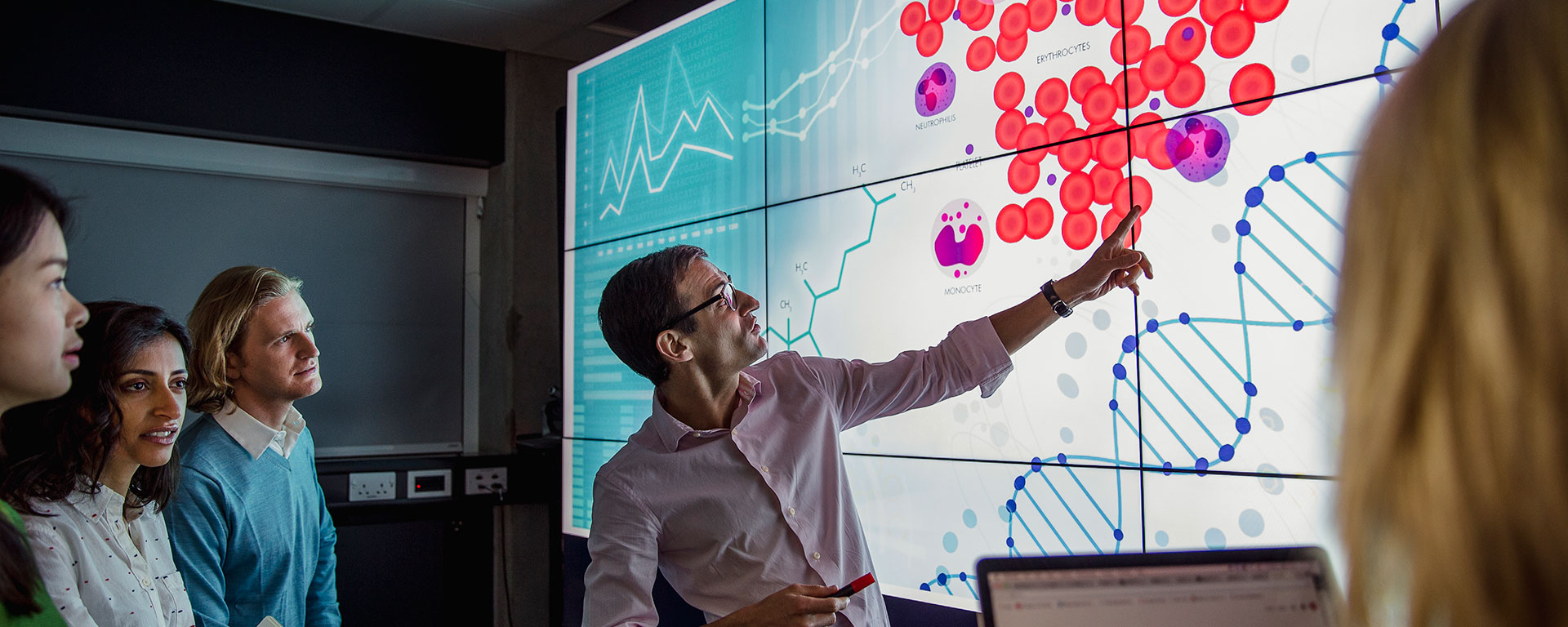Little Known Facts About Bioinformatics Tutor.
Wiki Article
Bioinformatics Tutor Can Be Fun For Everyone
Table of ContentsBioinformatics Tutor Things To Know Before You Get ThisSee This Report about Bioinformatics TutorBioinformatics Tutor - QuestionsOur Bioinformatics Tutor DiariesNot known Incorrect Statements About Bioinformatics Tutor
Of the overall individuals involved in the training, 80% were trainees from public college organizations, while the continuing to be 20% came from personal establishments. To receive a certificate of involvement, trainees were needed to go to at least 90% of the complete training hours. As a result of this requirement, a remarkable 95% of the individuals successfully acquired their certifications, having not only satisfied the minimum presence standards but also completed all designated tasks throughout the training.Throughout the elevation of the COVID-19 pandemic, especially in between June and August 2020, the task group was charged with organizing specialized training in bioinformatics. This training was particularly focused on pupils from the study team Center for Research in Applied Computing at the Federal College of Pará (UFRA) The adjustment to remote discovering platforms due to the pandemic developed a possibility to check out new teaching techniques and electronic tools that enhanced both reach and performance.
This program was created to give an accessible yet comprehensive summary of Artificial Intelligence techniques, particularly as applied in bioinformatics (Bioinformatics Tutor). This virtual style made it possible for engagement from pupils throughout Brazil, several of whom could not have had the possibility to participate in in-person sessions.
Things about Bioinformatics Tutor
About 50% of the total training hours were devoted to practical tasks where students developed intelligent designs and applications in an array of scientific domains, consisting of genetics, molecular biology, and environmental information analysis. These platforms allowed trainees to involve in real-time data control, model training, and algorithm trial and error.Sixty of them were affiliated with various higher education organizations in the state of Pará, while the continuing to be twenty came from establishments situated in 5 various other Brazilian states. By introducing Artificial Knowledge in a useful and appropriate context, the effort served to connect the space between concept and real-world application, supplying trainees with a strong foundation for future research study or employment in the field.
The training effort developed part of a broader scholastic outreach initiative called the Bioinformatics when driving job. This job has, throughout the years, introduced dozens of pupils to the globe of bioinformatics and computational biology. The occasions held under this umbrella initiative have click here for info taken area throughout several regions and years, as summed up in Table 1 (Checklist of events, locations, years, and complete varieties of students and instructors)
Several of these teams, initially brought with each other by their participation in training events, have actually because gone on to generate independent scientific research study in cooperation with regional scholastic institutions. The training not only cultivated scientific thinking within the context of bioinformatics yet also stimulated joint relationships that prolonged past the training setting.
9 Easy Facts About Bioinformatics Tutor Shown
The same group, omitting IH and RR, likewise acted as tutors for the useful training modules. Financing for the project was offered through the grant 88887.200562/ 2018-00 from CAPES.The Federal University of Pará's Workplace of Research study (PROPESP/UFPA) likewise provided financial backing, particularly for the production of the final manuscript. The writers state no monetary or commercial problems of Website rate of interest that could have affected the research. All analyses and viewpoints expressed in this post additional resources are entirely those of the writers and do not necessarily mirror those of their respective establishments, the publisher, editors, or reviewers entailed in the publication procedure.

The Basic Principles Of Bioinformatics Tutor
From an instructional viewpoint, the teaching method made use of in the training was purposefully interactive. Courses were performed in a manner that encouraged student engagement and discussion, going beyond memorizing memorization to discover just how concepts are developed, applied in day-to-day live, and checked in scholastic setups. The educational philosophy focused on nurturing both strong and having a hard time trainees, giving customized assistance, and structure self-confidence via continual mentorship and perseverance.
Each team, being composed of about 36 participants, was supported by three coaches-- a lot of whom were postdoctoral scientists with customized proficiency. These mentors not only aided develop the team jobs however additionally promoted their implementation, ensuring that each research question was both relevant and appropriately challenging. The objective was to give a naturally realistic context that individuals can discover with flexible goals and access to curated datasets.
For additional understandings right into the technique and end results of this project-based understanding strategy, viewers are routed to S1 Text, that includes in-depth descriptions of the pedagogical structure, analysis approaches, and job styles used in the training sessions.
Not known Facts About Bioinformatics Tutor
Of the total individuals included in the training, 80% were pupils from public higher education establishments, while the staying 20% came from private organizations. To qualify for a certification of participation, trainees were required to go to at the very least 90% of the overall training hours. Especially, beyond the pupils who signed up in the training sessions, 7 knowledgeable instructors took part in supplying the courses, while 3 dedicated research study teachers coordinated the general training procedure. Roughly 50% of the overall training hours were committed to useful tasks where pupils built intelligent versions and applications in an array of scientific domains, consisting of genes, molecular biology, and environmental data analysis. The training not just cultivated scientific reasoning within the context of bioinformatics but likewise triggered collaborative relationships that prolonged past the training setting.Report this wiki page